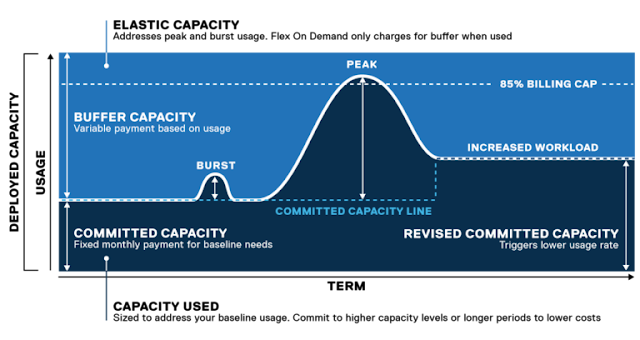As I was leaving home the other day, I noticed a sortie of six Black Hawk attack helicopters flying very low around the area. We live near a military base, so we see a lot of training activity throughout the year. Even though this training and testing can be noisy at times for the neighborhood, they are a must to make military operations work. Missions can be delicate, stressful and full of unknowns, and sometimes the execution is thousands of miles away. In addition, the military relies on partners to get them in and out of the field. The confidence that comes from all that training, testing and partnerships helps the teams scale faster to deployment and, hopefully, a successful mission.
As I think about it, I realize that IT challenges are similar. Naturally customers want solutions that have been tested, are easily deployable and can successfully and confidently get them to where they need to be.
This is where Dell Technologies Validated Designs come in. These are workload-optimized solutions that help organizations scale faster with confidence while improving financial metrics creating pathways to digital transformation. Validated Designs are designed for specific use cases. These integrated solutions have been designed, tested and proven by Dell Technologies’ engineering and solution partners to help speed and simplify deployment of new service and offerings, allowing organizations to achieve both faster implementation and return on investment.
Just as all that prep helps to take the guesswork out of spinning up for a military mission, Validated Designs from Dell Technologies takes the guesswork and stress out of deploying mission-critical modernized digital infrastructure for a customer.
Where can Validated Designs help you leverage solutions that lead to competitive advantage? We have developed a portfolio based on specific use cases for Analytics, AI, HPC, Microsoft, Oracle, SAP, and VDI.
Validated Designs use cases
Analytics: Let’s face it, data is everywhere. The sheer volume of data is overwhelming. Those customers who make sense of all of it and become data-centric can transform how they do business while generating great potential for growing revenue and controlling costs. The hard part is knowing where to start. Dell Technologies Validated Designs for Analytics meets a customer where they are on their journey with solutions that help unlock the value of data and lay the foundation for growth.
Artificial Intelligence (AI): AI can change an organization’s business by giving customers an opportunity to quickly identify trends and patterns that otherwise would be difficult and time-consuming to detect. The knowledge gained can result in changes to product, increased competitiveness, faster go-to-market and more. Validated Designs for AI helps customers achieve a consistent approach to AI to capitalize on the latest technological advances, while reducing the complexity of implementation, gaining faster speed to market and achieving deeper insights, more quickly. As a leader with proven AI expertise, Dell Technologies can help organizations just getting started and those looking to take AI to the next level.
High-Performance Computing (HPC): Customers want results and want them faster. Results that drive the creation of intellectual property with price and performance optimized for better value. As active innovators and collaborators in the worldwide HPC community, Dell Technologies HPC experts know how to get those results. Validated Designs for HPC from Dell Technologies gives businesses scalable, flexible, market-ready solutions built to deliver breakthroughs faster. Power tomorrow’s discoveries with the expertise to bring it all together today.
Microsoft: Data is the true differentiator for businesses. Businesses do not need to simply store data — they need to access, ingest and analyze data, regardless of where it resides. With Validated Designs for Microsoft, businesses can take advantage of next-generation analytics and go behind their data to draw actionable insights. The solutions designed for the Microsoft data platform helps businesses accelerate Microsoft SQL and Azure hybrid cloud modernization journeys with more confidence and less stress, laying the foundation for future success in innovation.
Oracle: Dell Technologies understands the opportunities and challenges in becoming a true, data-driven business. Validated Designs for Oracle optimize Oracle investments making it possible to operate with maximum efficiency, scalability and risk mitigation. Gain control and reduce complexity with a modern Oracle foundation, one that supports traditional and emerging Oracle applications and databases. Validated Designs solutions provide the foundation businesses need to connect data across the Oracle landscape and achieve greater outcomes for the business of today and tomorrow.
SAP: SAP businesses are driven by the power of data and turning insights into action. In order to be ready for the data era, they must build the right foundation. Validated Designs for SAP simplifies the path of digital transformation and the SAP Intelligent Enterprise to achieve faster, more reliable and fully predictable deployment of a strong digital foundation. Dell Technologies’ SAP-certified infrastructure and validate designs enable organizations to shift focus from managing infrastructure to accelerating innovation for better business outcomes.
Virtual Desktop Infrastructure (VDI): VDI empowers the workforce and enhances user collaboration and productivity. These days, much of that productivity can be remote. Remote users are growing and have high expectations for performance and availability no matter where they’re working or learning. Remote work also means that more devices and sensitive data are out of direct IT control, increasing the risk for data theft, virus, malware and ransomware attacks. With Validated Design solutions for VDI from Dell Technologies, customers can streamline design and implementation of solutions optimized for performance, cost-effectiveness and security.
Business Without Boundaries
We thank the men and women of our military for serving our country and keeping us safe. Just as they train and test their soldiers and equipment for mission success, Dell Technologies tests and validates workload-optimized solutions to help businesses scale faster, while saving time, cost and resources. Validated Designs from Dell Technologies speed time to value, enable customers to build with confidence and build business without boundaries. You can learn more about how Dell Technologies can help design your intelligent business here.
Source: delltechnologies.com


























